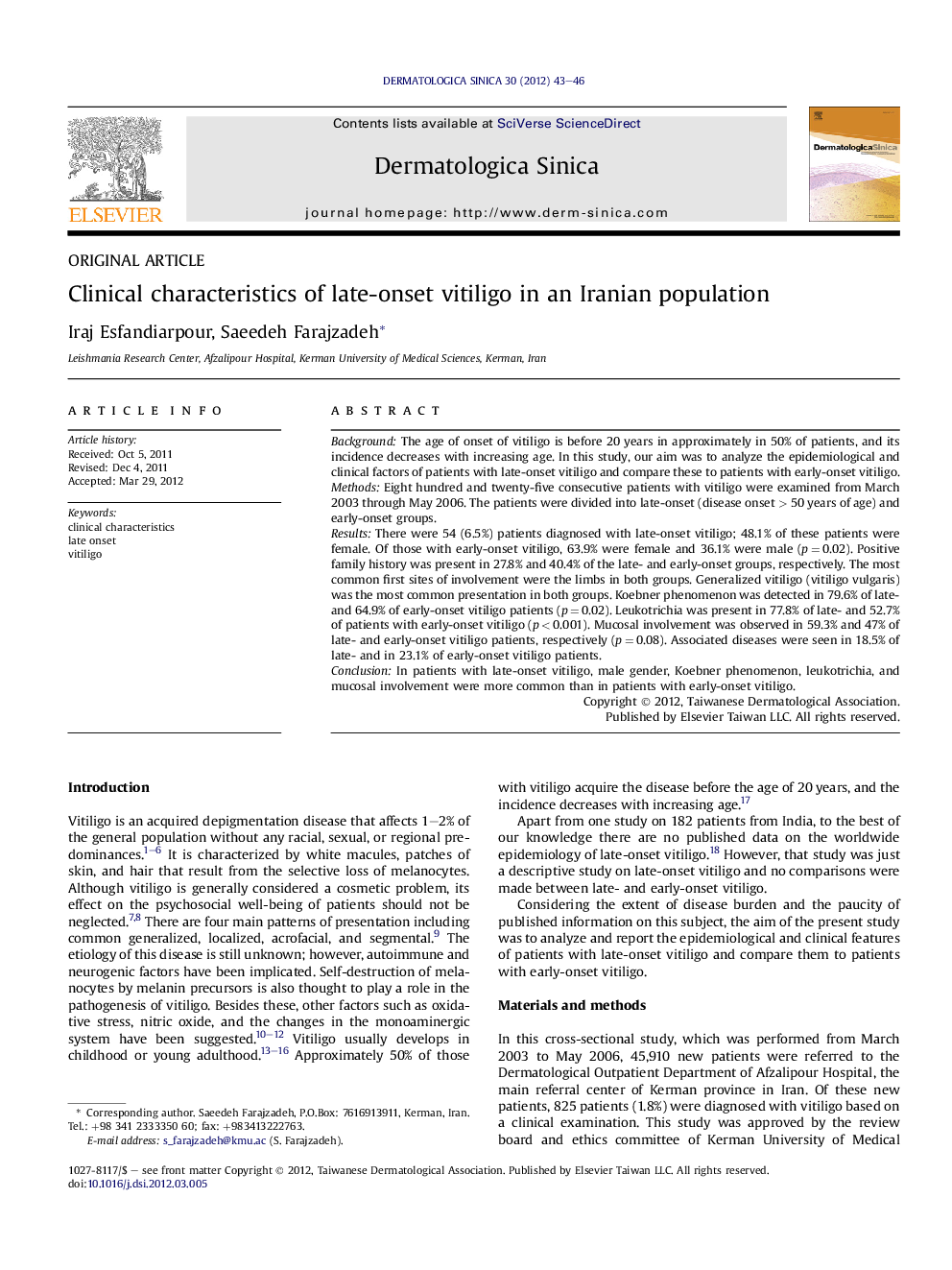| Article ID | Journal | Published Year | Pages | File Type |
|---|---|---|---|---|
| 3196547 | Dermatologica Sinica | 2012 | 4 Pages |
BackgroundThe age of onset of vitiligo is before 20 years in approximately in 50% of patients, and its incidence decreases with increasing age. In this study, our aim was to analyze the epidemiological and clinical factors of patients with late-onset vitiligo and compare these to patients with early-onset vitiligo.MethodsEight hundred and twenty-five consecutive patients with vitiligo were examined from March 2003 through May 2006. The patients were divided into late-onset (disease onset > 50 years of age) and early-onset groups.ResultsThere were 54 (6.5%) patients diagnosed with late-onset vitiligo; 48.1% of these patients were female. Of those with early-onset vitiligo, 63.9% were female and 36.1% were male (p = 0.02). Positive family history was present in 27.8% and 40.4% of the late- and early-onset groups, respectively. The most common first sites of involvement were the limbs in both groups. Generalized vitiligo (vitiligo vulgaris) was the most common presentation in both groups. Koebner phenomenon was detected in 79.6% of late- and 64.9% of early-onset vitiligo patients (p = 0.02). Leukotrichia was present in 77.8% of late- and 52.7% of patients with early-onset vitiligo (p < 0.001). Mucosal involvement was observed in 59.3% and 47% of late- and early-onset vitiligo patients, respectively (p = 0.08). Associated diseases were seen in 18.5% of late- and in 23.1% of early-onset vitiligo patients.ConclusionIn patients with late-onset vitiligo, male gender, Koebner phenomenon, leukotrichia, and mucosal involvement were more common than in patients with early-onset vitiligo.
